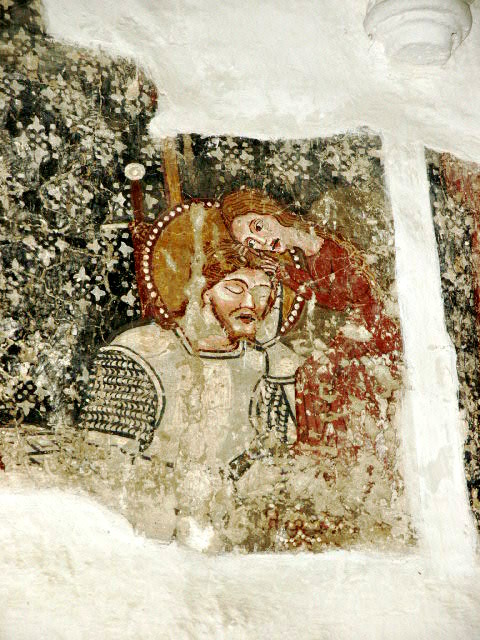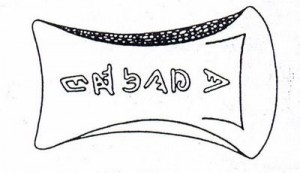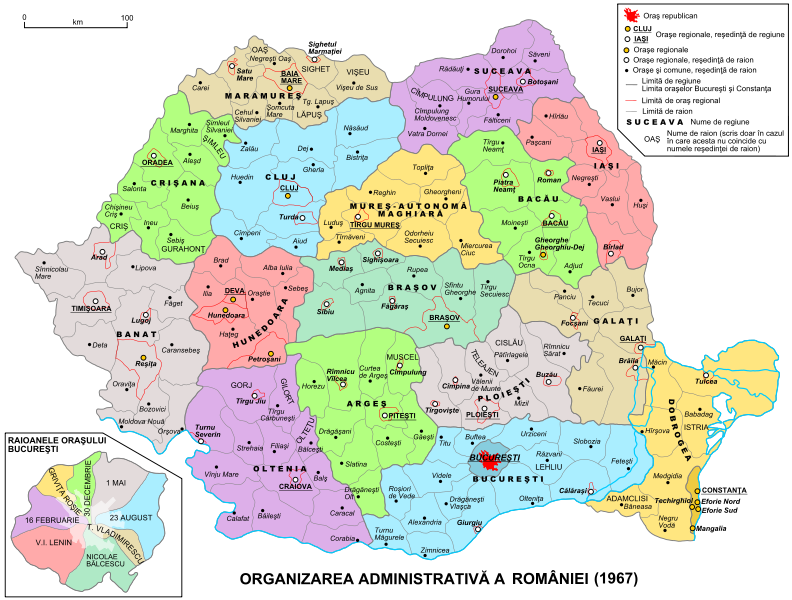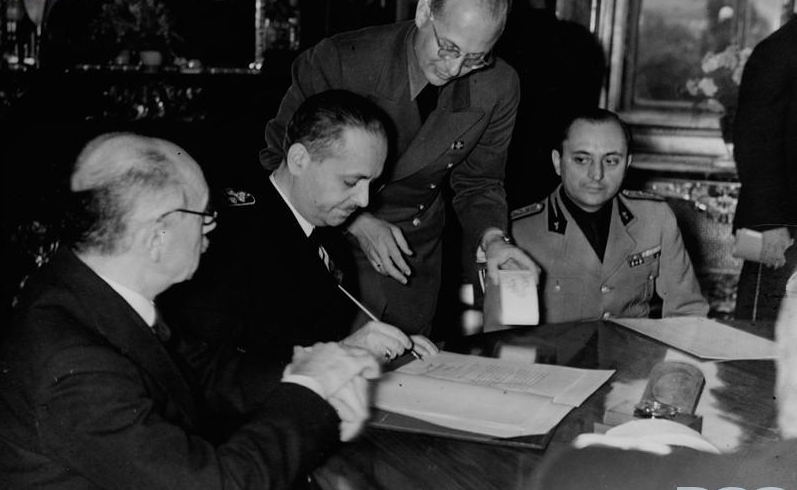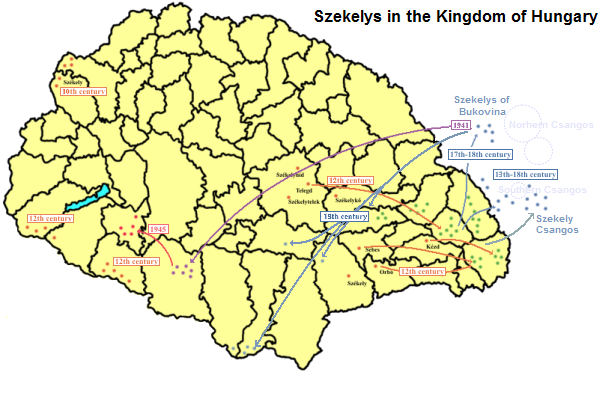|
Inlăceni
Atid (, ) is a commune in Harghita County, Romania. It lies in the Székely Land, an ethno-cultural region in eastern Transylvania. The route of the Via Transilvanica long-distance trail passes through the village of Inlăceni, which is administered by Atid commune. Component villages The commune is composed of five villages: History From ancient times the area was populated by Dacians. After the Roman conquest of Dacia, the Romans imposed their control in the area by constructing a fort known as Praetoria Augusta in Inlăceni village. The fort was discovered in 1858. The villages were historically part of the Székely Land region of Transylvania province. They belonged to Udvarhely district until the administrative reform of Transylvania in 1876, when they fell within Udvarhely County in the Kingdom of Hungary. After the Treaty of Trianon of 1920, they became part of Romania and fell within Odorhei County during the interwar period. In 1940, the second Vienna Award ... [...More Info...] [...Related Items...] OR: [Wikipedia] [Google] [Baidu] |
Praetoria Augusta (castra)
Praetoria Augusta was a fort in the Roman province of Dacia. See also *List of castra Castra (Latin, singular castrum) were military forts of various sizes used by the Roman army throughout the Empire in Europe, Asia and Africa. The largest castra were permanent legionary fortresses. Locations The disposition of the castra refl ... External linksRoman castra from Romania - Google MapsEarth Notes Historic monuments in Harghita County Roman auxiliary forts in Romania Ancient history of Transylvania {{Dacia-stub ... [...More Info...] [...Related Items...] OR: [Wikipedia] [Google] [Baidu] |
Unitarian Church Of Transylvania
The Unitarian Church of Transylvania (; ), also known as the Hungarian Unitarian Church (; ), is a Nontrinitarian Christian denomination of the Unitarian tradition, based in the city of Cluj, Transylvania, Romania. Founded in 1568 in the Eastern Hungarian Kingdom by the Unitarian preacher and theologian Ferenc Dávid (c. 1520–1579), it is the oldest continuing Unitarian denomination in the world. It has a majority- Hungarian following, and is one of the 18 religious denominations given official recognition by the Government of Romania. The Transylvanian and Hungarian Unitarians represent the only branch of Unitarianism not to have adopted a congregationalist polity, and remains quasi- episcopal; the Irish Non-subscribing Presbyterian Church, a distinct body closely related to Unitarianism, has a presbyterian structure.Paul F. Bradshaw, ''The New SCM Dictionary of Liturgy and Worship'', SCM-Canterbury Press Ltd, London, 2002, p.460. The Unitarian Church of Transylvania is ... [...More Info...] [...Related Items...] OR: [Wikipedia] [Google] [Baidu] |
Hungarians In Romania
The Hungarian minority of Romania (, ; ) is the largest Minorities of Romania, ethnic minority in Romania. As per the 2021 Romanian census, 1,002,151 people (6% of respondents) declared themselves Hungarian, while 1,038,806 people (6.3% of respondents) stated that Hungarian language, Hungarian was their mother tongue. Most Hungarians, ethnic Hungarians of Romania live in areas that were parts of Hungary before the Treaty of Trianon of 1920. Encompassed in a region known as Transylvania, the most prominent of these areas is known generally as Székely Land (; ), where Hungarians comprise the majority of the population. Transylvania, in the larger sense, also includes the historic regions of Banat, Crișana and Maramureș. There are forty-one counties of Romania; Hungarians form a large majority of the population in the counties of Harghita County, Harghita (85.21%) and Covasna County, Covasna (73.74%), and a large percentage in Mureș County, Mureș (38.09%), Satu Mare Count ... [...More Info...] [...Related Items...] OR: [Wikipedia] [Google] [Baidu] |
Székely Land
The Székely Land or Szeklerland (, , Old Hungarian script, Székely runes: 𐲥𐳋𐳓𐳉𐳗𐳌𐳞𐳖𐳇; and sometimes ; ; ) is a historic and ethnographic area in present-day Romania, inhabited mainly by Székelys, a subgroup of Hungarians. Its cultural centre is the city of Târgu Mureș (Marosvásárhely), the largest settlement in the region. Székelys (or Szeklers) live in the valleys and hills of the Eastern Carpathian Mountains, corresponding mostly to the present-day Harghita County, Harghita, Covasna County, Covasna, and parts of Mureș County, Mureș counties in Romania. Originally, the name ''Székely Land'' denoted the territories of a number of History of the Székely people, autonomous Székely seats within Transylvania. The self-governing Székely seats had their own administrative system, and existed as legal entities from medieval times until the 1870s. The privileges of the Székely and Transylvanian Saxons, Saxon Seat (territorial-administrative uni ... [...More Info...] [...Related Items...] OR: [Wikipedia] [Google] [Baidu] |
Old Hungarian Script
The Old Hungarian script or Hungarian runes (, 'székely-magyar runiform', or ) is an alphabetic writing system used for writing the Hungarian language. Modern Hungarian is written using the Latin-based Hungarian alphabet. The term "old" refers to the historical priority of the script compared with the Latin-based one. The Old Hungarian script is a child system of the Old Turkic alphabet. The Hungarian people, Hungarians Hungarian conquest of the Carpathian Basin, settled the Carpathian Basin in 895. After the establishment of the Kingdom of Hungary (1000–1526), Christian Hungarian kingdom, the old writing system was partly forced out of use during the rule of Stephen I of Hungary, King Stephen, and the Latin alphabet was adopted. However, among some professions (e.g. shepherds who used a "rovás-stick" to officially track the number of animals) and in Transylvania, the script has remained in use by the Székelys, Székely Magyars, giving its Hungarian name . The writing could ... [...More Info...] [...Related Items...] OR: [Wikipedia] [Google] [Baidu] |
Magyar Autonomous Region
The Magyar Autonomous Region (1952–1960) (; ) and Mureș-Magyar Autonomous Region (1960–1968) were autonomous Regions of the People's Republic of Romania, regions in the Romanian People's Republic (later the Socialist Republic of Romania). History One of the key factors behind the autonomous region was the desire of the communist Romanian government to win over the Hungarian population in Transylvania. Support for the Romanian Communist Party was very strong in ethnically Hungarian areas, and Hungarian communists made up 26% of all communists in Romania before World War II. Following the Hungarian Northern Transylvania, rule of Northern Transylvania during World War II, ethnic Hungarians now made up 10% of Romanian population, and the communist government adopted a policy of appeasement towards the Hungarian minority; this was a pragmatic stance as in contrast to largely pro-socialist Hungarians in Romania, ethnic Romanians were unsupportive of the Communist Party and the com ... [...More Info...] [...Related Items...] OR: [Wikipedia] [Google] [Baidu] |
Second Vienna Award
The Second Vienna Award was the second of two territorial disputes that were arbitrated by Nazi Germany and the Kingdom of Italy. On 30 August 1940, they assigned the territory of Northern Transylvania, including all of Maramureș and part of Crișana, from the Kingdom of Romania to the Kingdom of Hungary (1920–46), Kingdom of Hungary. Background After World War I, the multiethnic Lands of the Crown of Saint Stephen, Kingdom of Hungary was divided by the 1920 Treaty of Trianon to form several new nation states, but Hungary noted that the new state borders did not follow ethnic boundaries. The new nation state of Hungary was about a third the size of prewar Hungary, and millions of ethnic Hungarians were left outside the new Hungarian borders. Many historically-important areas of Hungary were assigned to other countries, and the distribution of natural resources was uneven. The various non-Hungarian populations generally saw the treaty as justice for their historically-margina ... [...More Info...] [...Related Items...] OR: [Wikipedia] [Google] [Baidu] |
Northern Transylvania
Northern Transylvania (, ) was the region of the Kingdom of Romania that during World War II, as a consequence of the August 1940 territorial agreement known as the Second Vienna Award, became part of the Kingdom of Hungary (1920-1946), Kingdom of Hungary. With an area of , the population was largely composed of both ethnic Romanians and Hungarians. In October 1944, Soviet Union, Soviet and Romanian Land Forces, Romanian forces gained control of the territory, and by March 1945 Northern Transylvania returned to Romanian administration. After the war, this was confirmed by the Paris Peace Treaties, 1947, Paris Peace Treaties of 1947. Background Transylvania has a varied history. Once part Kingdom of Kingdom of Dacia (82 BC–106 AD), in 106 AD, the Roman Empire conquered the territory, after the Roman legions withdrew in 271 AD, it was overrun by a succession of various tribes such as Carpi (people), Carpi, Visigoths, Huns, Gepids, Pannonian Avars, Avars, and Slavs, in the 9t ... [...More Info...] [...Related Items...] OR: [Wikipedia] [Google] [Baidu] |
Harghita County
Harghita County (, and , ) is a county () in the center of Romania, in eastern Transylvania, with the county seat at Miercurea Ciuc. Demographics 2002 census In 2002, Harghita County had a population of 326,222 and a population density of 52/km2. * Hungarians – 84.62% (or 276,038) * Romanians – 14.06% (or 45,870) * Romani – 1.18% (or 3,835) * Others – 0.14% 2011 census In 2011, it had a population of 302,432 and a population density of 46/km2. * Hungarians – 85.21% (or 257,707) * Romanians – 12.96% (or 39,196) * Romani * Others – 1.76% (or 5,326). 2021 census In 2021, it had a population of 291,950, and a population density of 43/km2. * Hungarians – 85.67% (or 232,157) * Romanians – 12.41% (or 33,634) * Romani - 1.82% (or 4,928) * Others – 0.1% (or 282). Harghita county has the highest percentage of Hungarians in Romania, just ahead of Covasna county. The Hungarians form the majority of the population in most of the county's municipal ... [...More Info...] [...Related Items...] OR: [Wikipedia] [Google] [Baidu] |
Székelys
The Székelys (, Old Hungarian script, Székely runes: ), also referred to as Szeklers, are a Hungarians, Hungarian subgroup living mostly in the Székely Land in Romania. In addition to their native villages in Suceava County in Bukovina, a significant population descending from the Székelys of Bukovina currently lives in Tolna County, Tolna and Baranya County, Baranya counties in Hungary and certain districts of Vojvodina, Serbia. In the Middle Ages, the Székelys played a role in the defense of the Kingdom of Hungary#Middle Ages, Kingdom of Hungary against the Ottoman Empire, Ottomans in their posture as guards of the eastern border. With the Treaty of Trianon of 1920, Transylvania (including the Székely Land) became part of Romania, and the Székely population was a target of Romanianization efforts. In 1952, during the Socialist Republic of Romania, communist rule of Romania, the former counties with the highest concentration of Székely population – Mureș County#His ... [...More Info...] [...Related Items...] OR: [Wikipedia] [Google] [Baidu] |
Hungarians
Hungarians, also known as Magyars, are an Ethnicity, ethnic group native to Hungary (), who share a common Culture of Hungary, culture, Hungarian language, language and History of Hungary, history. They also have a notable presence in former parts of the Kingdom of Hungary. The Hungarian language belongs to the Ugric languages, Ugric branch of the Uralic languages, Uralic language family, alongside the Khanty languages, Khanty and Mansi languages, Mansi languages. There are an estimated 14.5 million ethnic Hungarians and their descendants worldwide, of whom 9.6 million live in today's Hungary. About 2 million Hungarians live in areas that were part of the Kingdom of Hungary before the Treaty of Trianon in 1920 and are now parts of Hungary's seven neighbouring countries, Hungarians in Slovakia, Slovakia, Hungarians in Ukraine, Ukraine, Hungarians in Romania, Romania, Hungarians in Serbia, Serbia, Hungarians of Croatia, Croatia, Prekmurje, Slovenia, and Hungarians in Austria, Aust ... [...More Info...] [...Related Items...] OR: [Wikipedia] [Google] [Baidu] |

